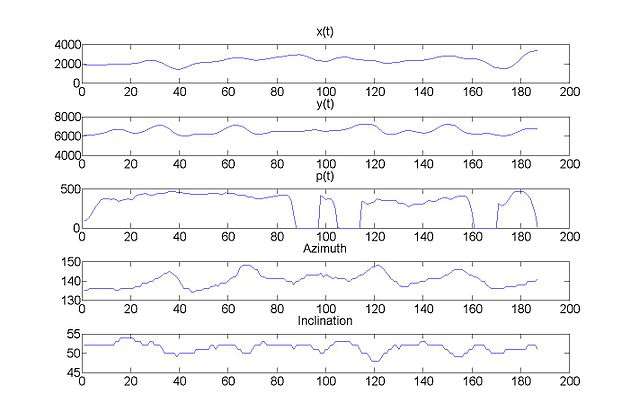Signature recognition


Signature recognition is a behavioural biometric. It can be operated in two different ways:
Static: In this mode, users write their signature on paper, digitize it through an optical scanner or a camera, and the biometric system recognizes the signature analyzing its shape. This group is also known as “off-line”.
Dynamic: In this mode, users write their signature in a digitizing tablet, which acquires the signature in real time. Another possibility is the acquisition by means of stylus-operated PDAs. Some systems also operate on smart-phones or tablets with a capacitive screen, where users can sign using a finger or an appropriate pen. Dynamic recognition is also known as “on-line”. Dynamic information usually consists of the following information:
- spatial coordinate x(t)
- spatial coordinate y(t)
- pressure p(t)
- azimuth az(t)
- inclination in(t)
- pen up/down
The state-of-the-art in signature recognition can be found in the last major international competition.[1]
The most popular pattern recognition techniques applied for signature recognition are dynamic time warping, hidden Markov models and vector quantization. Combinations of different techniques also exist.[2]
Related techniques
Recently, a handwriten biometric approach has also been proposed.[3] In this case, the user is recognized analyzing his handwritten text (see also Handwritten biometric recognition).
Databases
Several public databases exist, being the most popular ones SVC,[4] and MCYT.[5]
References
- ↑ Houmani, Nesmaa; A. Mayoue; S. Garcia-Salicetti; B. Dorizzi; M.I. Khalil; M. Mostafa; H. Abbas; Z.T. Kardkovàcs; D. Muramatsu; B. Yanikoglu; A. Kholmatov; M. Martinez-Diaz; J. Fierrez; J. Ortega-Garcia; J. Roure Alcobé; J. Fabregas; M. Faundez-Zanuy; J. M. Pascual-Gaspar; V. Cardeñoso-Payo; C. Vivaracho-Pascual (March 2012). "BioSecure signature evaluation campaign (BSEC'2009): Evaluating online signature algorithms depending on the quality of signatures". Pattern Recognition. 45 (3): 993–1003. doi:10.1016/j.patcog.2011.08.008.
- ↑ Faundez-Zanuy, Marcos (2007). "On-line signature recognition based on VQ-DTW". Pattern recognition. 40 (3): 981–992. doi:10.1016/j.patcog.2006.06.007.
- ↑ Chapran, J. (2006). "Biometric Writer Identification: Feature Analysis and Classification". International Journal of Pattern Recognition & Artificial Intelligence. 20: 483–503. doi:10.1142/s0218001406004831.
- ↑ Yeung, D. H.; Xiong, Y.; George, S.; Kashi, R.; Matsumoto, T.; Rigoll, G. (2004). "SVC2004: First international signature verification competition". Lecture Notes in Computer Science. LNCS-3072: 16–22.
- ↑ Ortega-Garcia, Javier; J. Fierrez; D. Simon; J. Gonzalez; M. Faúndez-Zanuy; V. Espinosa; A. Satue; I. Hernaez; J.-J. Igarza; C. Vivaracho; D. Escudero; Q.-I. Moro. "MCYT Baseline Corpus: A Multimodal Biometric Database". IEE Proceedings - Vision, Image and Signal Processing. 150: 395–401. doi:10.1049/ip-vis:20031078.